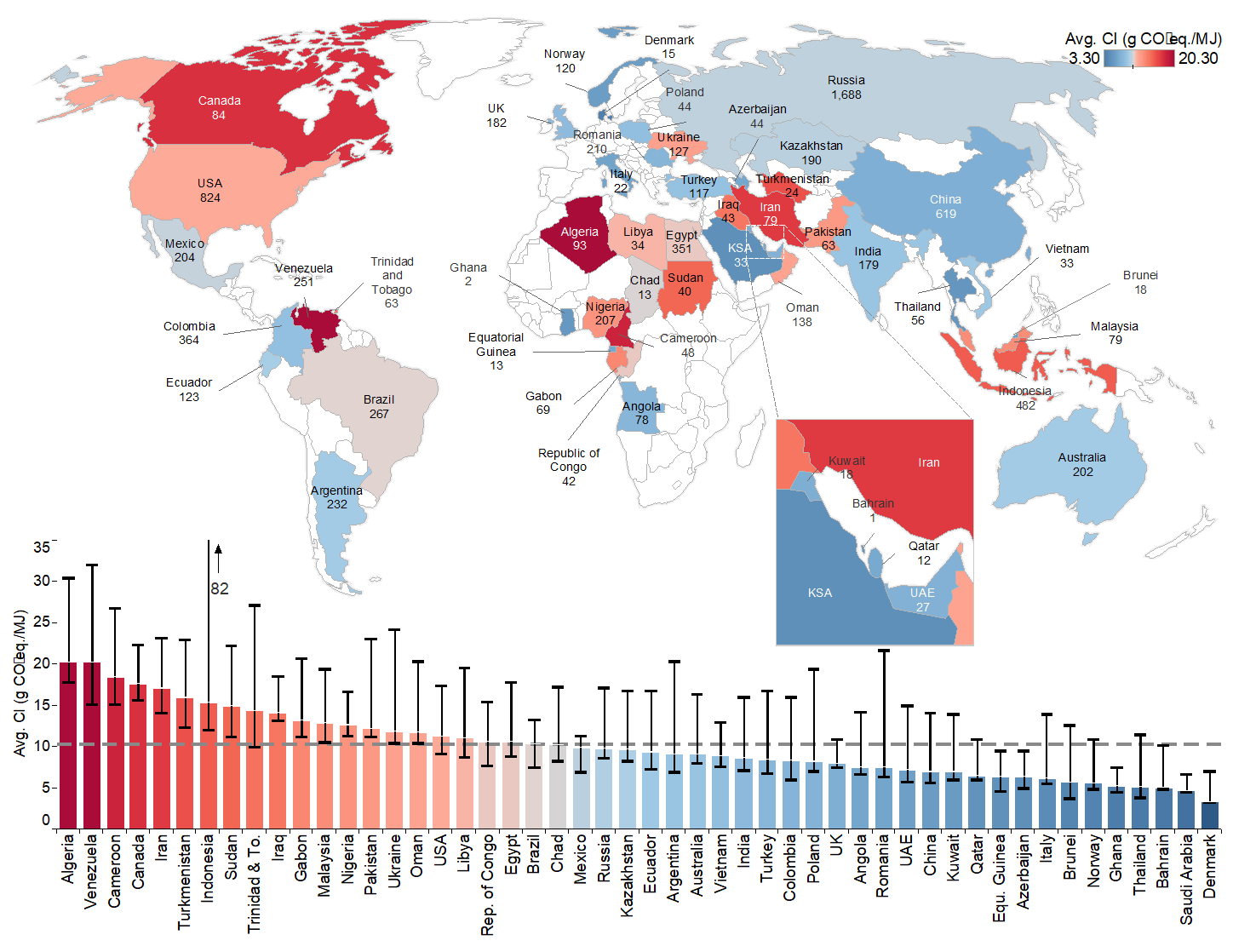19 Oil
The global oil and gas industry consumes 3-4% of global primary energy supply to extract, transport, and refine energy products.
19.1 Carbon Intensity of Crude Oil Production
Mansadi Abstract
The goals of the Paris Agreement pose challenges to the oil and gas sector given the need to meet energy demand globally while limiting greenhouse gas (GHG) emissions. We preliminarily quantify the heterogeneity of crude oil well-to-refinery carbon intensities (CIs) by performing field-by-field life-cycle analysis (LCA) of nearly 9,000 global oilfields representing ~98% of 2015 worldwide crude oil production. The global volume-weighted average upstream CI estimate is 10.3 g CO 2 eq./MJ crude oil, with country-level emissions ranging from 3.3 to 20.3 g CO 2 eq./MJ. Gas flaring and thermal extraction of heavy crude oils are the two major drivers of high GHG intensities. Global methane venting and fugitive emissions are poorly documented, yet evidence suggests they can increase the CI estimates considerably. Upstream gas management strategies alone could potentially mitigate ~18 Gt CO 2 eq in the 21 st century. Policy insights from this analysis regarding resource management, resource prioritization and emerging technologies could enable a reduction in the GHG footprint from the oil and gas industry.

Masnadi (2018) Global carbon intensity of crude oil production (pdf) (pdf SM) OPGEE Estimation Tool